A syrup for every season: 'Attar of Roses' scented geranium
Fragrant 'brush-past' plants will make your outdoor space even more memorable and sensuous
If you ever come over to our house, you’ll probably get a tour of our garden, where I’ll ask you to smell many things. Scent is a big part of the tour. And the best smells in our backyard come from foliage, not flowers.
Right outside the kitchen door is the lemon thyme.1 Next to it is the lavender mint in a window box. Shortly after that, you’ll be sniffing an Australian mint bush and a rose-scented geranium.
Plants named after things they are not! I’ve never been able to keep lavender alive, but mint is easy, and this special “lavender mint” has purply stems and an unforgettable floral taste. Our actual roses smell like nail polish remover and only bloom for a few months, whereas my rose-scented geranium is always poppin (scent-wise) because the scent comes from the leaves. And those leaves smell like the juiciest of roses.
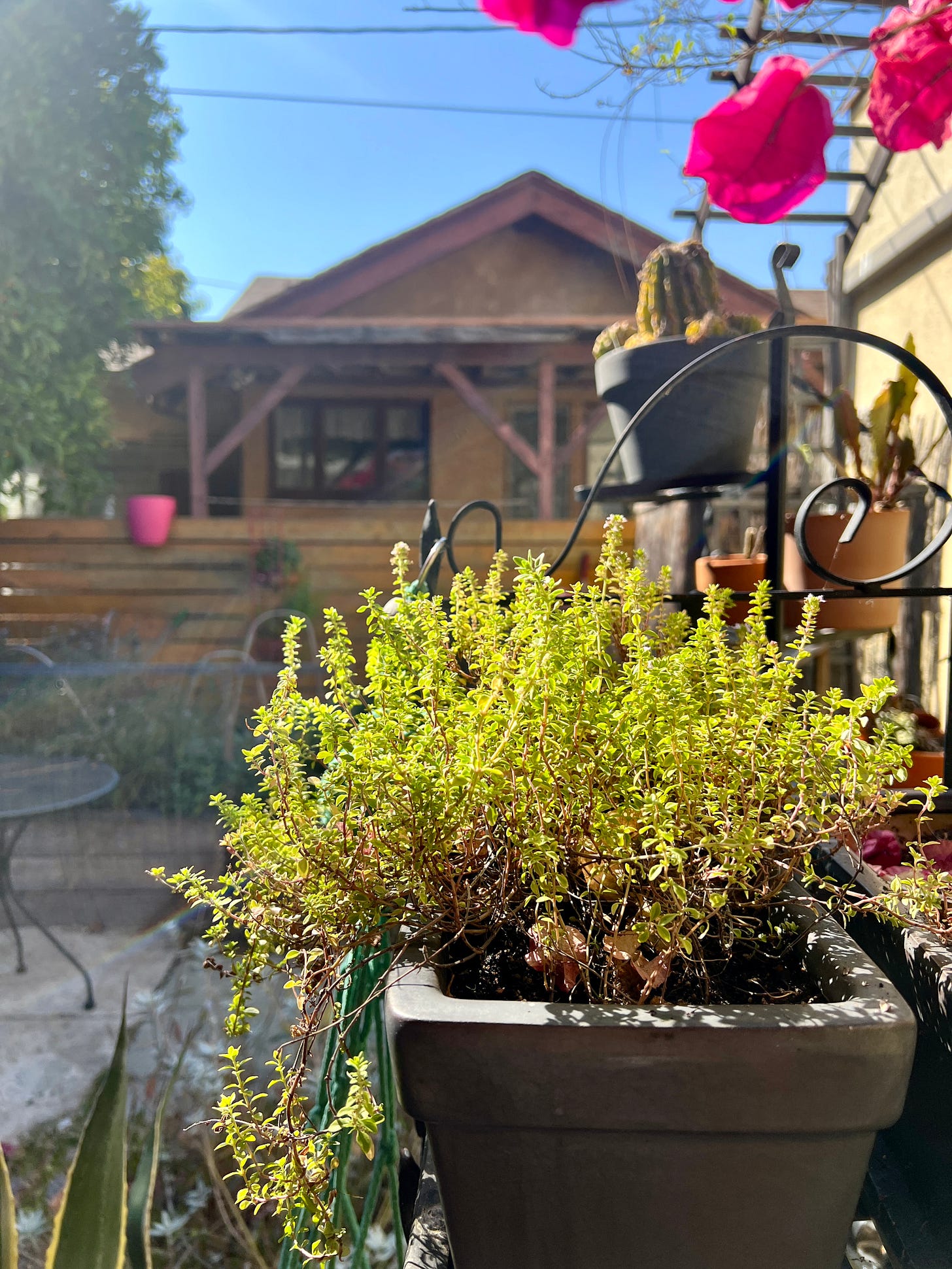


My goal is to create a scentscape within the landscape. It helps that some of the best-smelling plants in our garden are also very sculptural and like to get in your way. My native sage Salvia ‘Desperado’ leans over the pavers, so whenever humans or dogs brush by the foliage, they kick up a lingering fragrance of warm sage.
Some of these scent activations I really engineer. There was the prostrate rosemary I tried to make happen; for a minute it was straddling fencing in one of those railing planters that look like giant molars. The dream was for the rosemary to create a wall of evergreen foliage to rub against while passing by the raised bed. But, like lavender, I can’t keep rosemary alive. I’m more hellbent about rosemary though, so I’m going to try again.
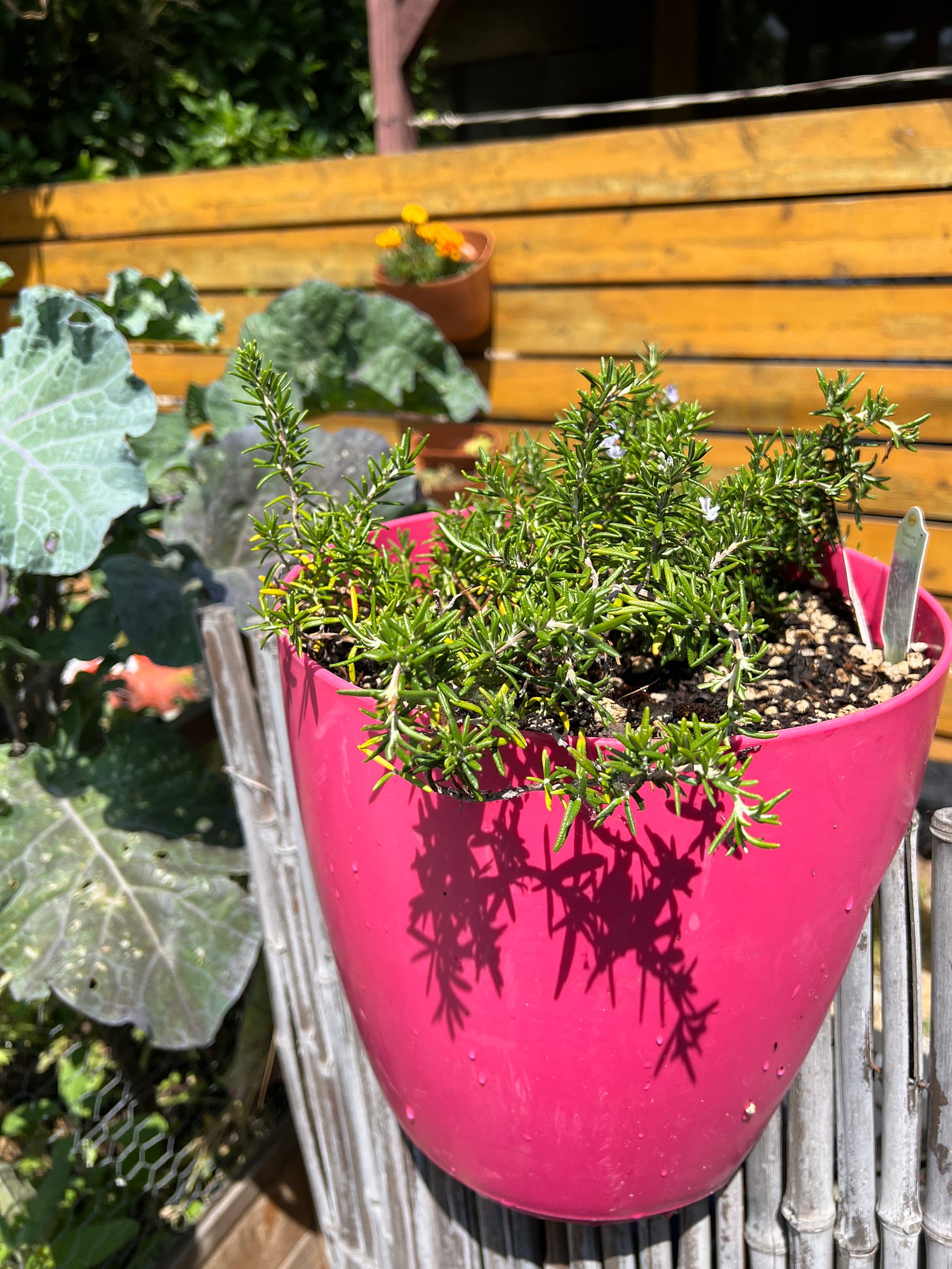
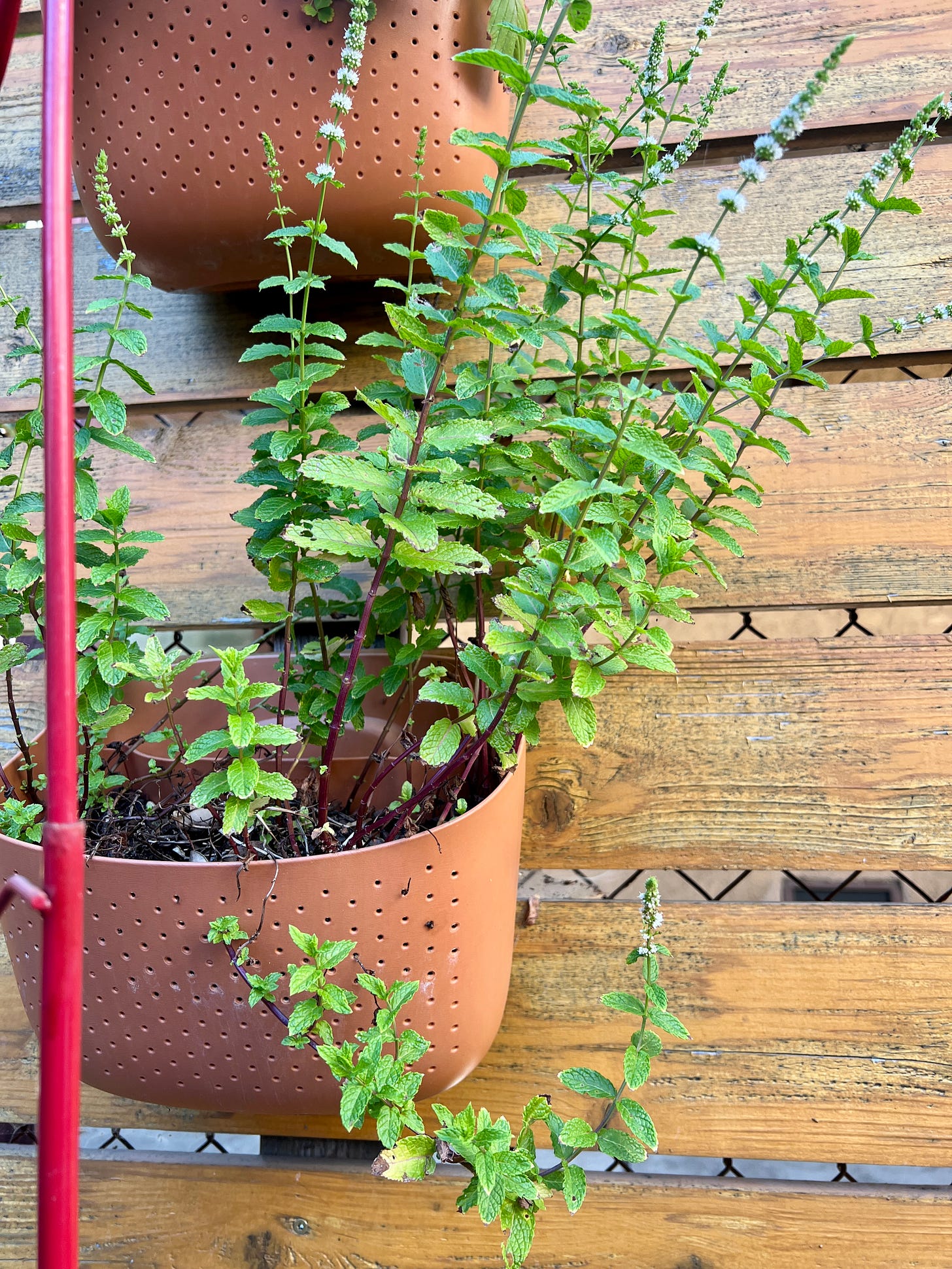
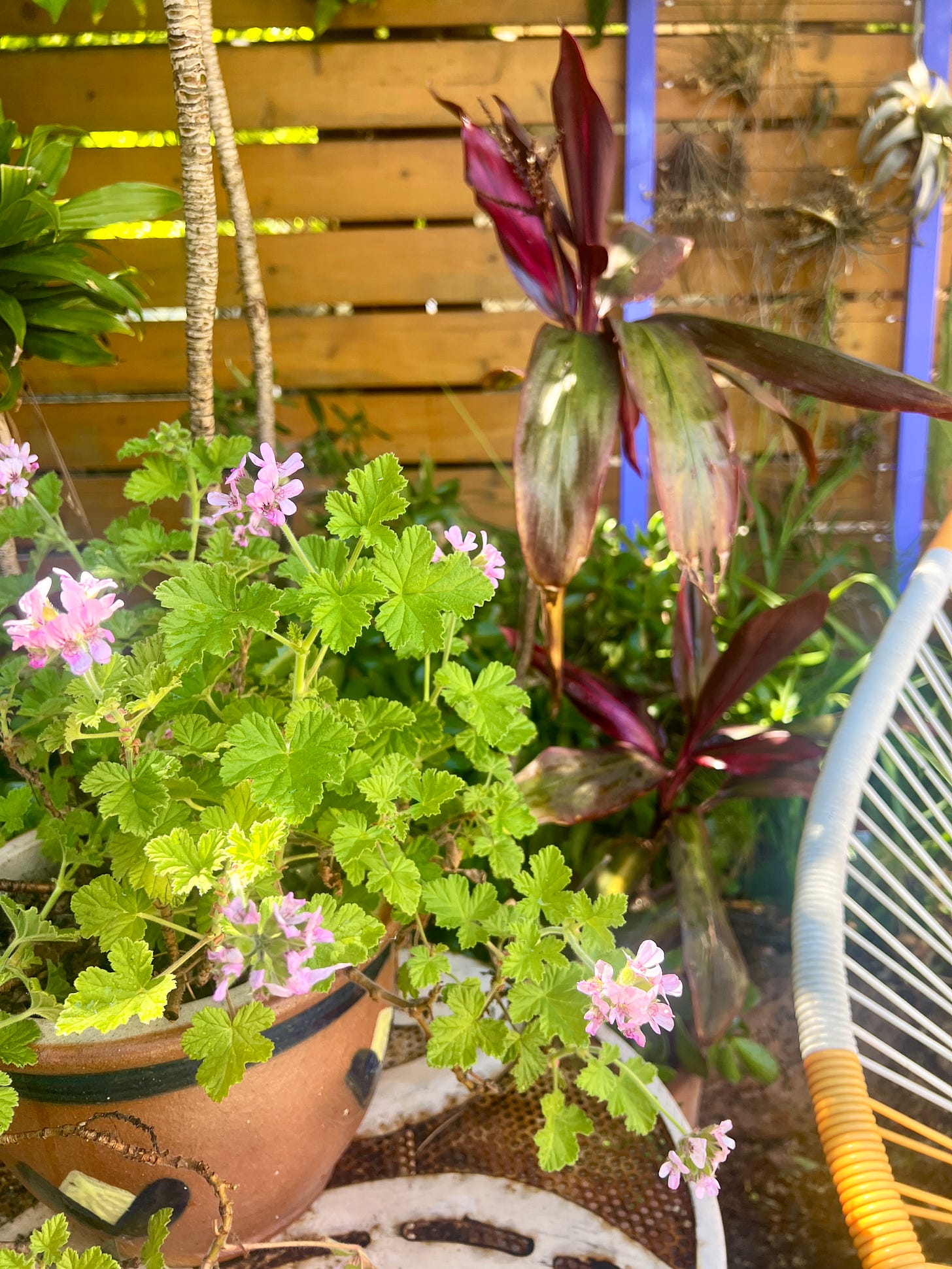
I’ve had better luck with scented Pelargonium plants aka scented geranium — the ‘Attar of Roses’ hybrid — on a side table where folks like to lounge, put their drinks, and tap into the ashtray. It’s easy to rub elbows with this plant. The leaves on my plant, which are fuzzy and crinkly, smell like roses in 4K without the powdery-ness. There’s a little citrus to it.2 The world of scented geraniums is a vast one; beyond roses and lemon, leaf scents can range from almond and nutmeg to chocolate-peppermint and ginger. In a bright window, it can be a houseplant.
Chillin on the Acapulco chair, friends can sniff a leaf while thinking about what to say next or while dodging a question.
Rose-scented geranium leaves are also edible.3 Jammable. Generally I don’t like the taste of roses in stuff (trying a Turkish delight while studying abroad in London and feeling my high hopes collapse into sad desolation was an emblematic moment for my semester there) but I was down to see what a rose-geranium syrup was all about.
I made my first batch on Juneteenth, and you know what? I’m hooked.
I used the recipe from my friend Maria C. Hunt’s book The Bubbly Bar. I’ve added a teaspoon or so to prosecco or just to seltzer water on a non-alcohol night. On the latter — it’s great having a flavorful garden soda you can make anytime for anyone; the persimmon-ginger syrup I made last winter came in clutch for Dry January…details on that coming in six months!4
Here’s how to make my go-to syrup for summer, the rose geranium syrup from page 98 of The Bubbly Bar:
3/4 cup sugar
20 rose geranium leaves, washed and patted dry
Add 3/4 cup water and the sugar to a 2-quart pot and bring to a boil. Lower the heat, add rose geranium leaves, and simmer for 15 minutes.
Remove from heat and let cool. Using a funnel, pour the cooled syrup into a sterilized glass bottle. Store in the refrigerator for up to one month.
The recipe says it makes a cup; I ended up with half the amount, which is fine. For straining, instead of a funnel, I used a mesh strainer. I also didn’t sterilize my glass bottle — only washed it ;) Fwiw I think you can add even more leaves if you can spare them and simmer for longer because you can push the flavor even more.
Maria notes that the syrup is good with “red fruits of all sorts.”
Maria uses the syrup in her Bubbling Blackberry Bramble cocktail on page 78, which joins blackberries, cucumber, lime, gin, and sparkling wine. It’s layered but refreshing — because of it I was turnt on Juneteenth. For that recipe, you’ll have to get her book.
On the non-alcoholic side, this rose geranium syrup in seltzer tastes like the Caribbean sodas I’d get from the bodega near my late grandmother’s apartment in Flatbush. There’s a hint of rose, herbal and citrus but it’s not overpowering. Plus the sugar makes it a little caramel-y. Sensory memory unlocked.
And that’s one of the reasons I like having so much fragrant foliage in the backyard. Scent activates and maybe improves memory. While sniffing my African blue basil, maybe you remember the last time you had a great slice of pizza…or a mediocre pizza but with your best friends. Sage takes you to the desert. And mint takes you to the beach or the pool or toothpaste or…? And maybe the next time you sniff a rose or rose-scented geranium or try a fancy dessert with it, you’ll remember when we were hanging out in my backyard and I kept telling you to smell things.
Lemon thyme: minutely variegated chartreuse and green with tiny lilac flowers. Smells and tastes just like lemon. Needs full sun. Don’t let the soil dry out. I rub it into these branzino fillets from Trader Joe’s before pan frying. Speaking of, Evan Stern’s Trader Joe’s Tuesday Treats series has got me adding to new items to the shopping list, particularly this review of their hash browns.
There’s a decent chance your local nursery has pelargoniums/scented geraniums or can order some for you. But I’ve also had excellent luck ordering them on Etsy.
Scented geraniums are native to southern Africa and Australia. Give yours full sun and make sure not to overwater. (It’s especially important to let the soil dry out between waterings during winter!) Winter hardy to USDA Zone 10. Pelargoniums are heat-tolerant and are just an iconic plant for a sun-drenched patio.
If you want to hear some relaxed chats about pelargoniums, do check out Jane Perrone’s podcast episodes that include them.
The usual disclaimers apply; make sure you aren’t using toxic pesticides or herbicides on or around it.
When I served that persimmon-ginger syrup last Thanksgiving, a friend coughed from all the ginger but then…reached for more.



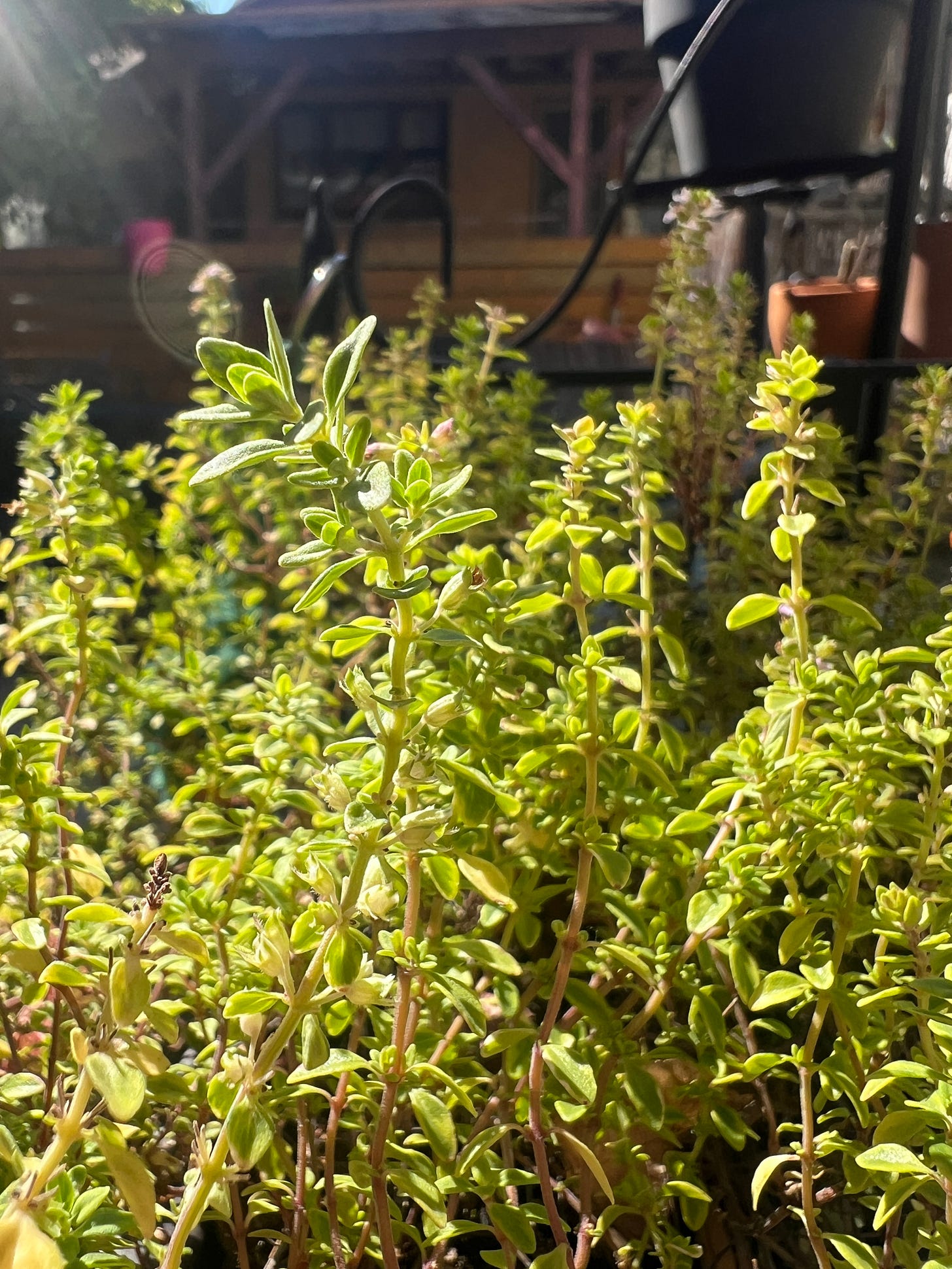
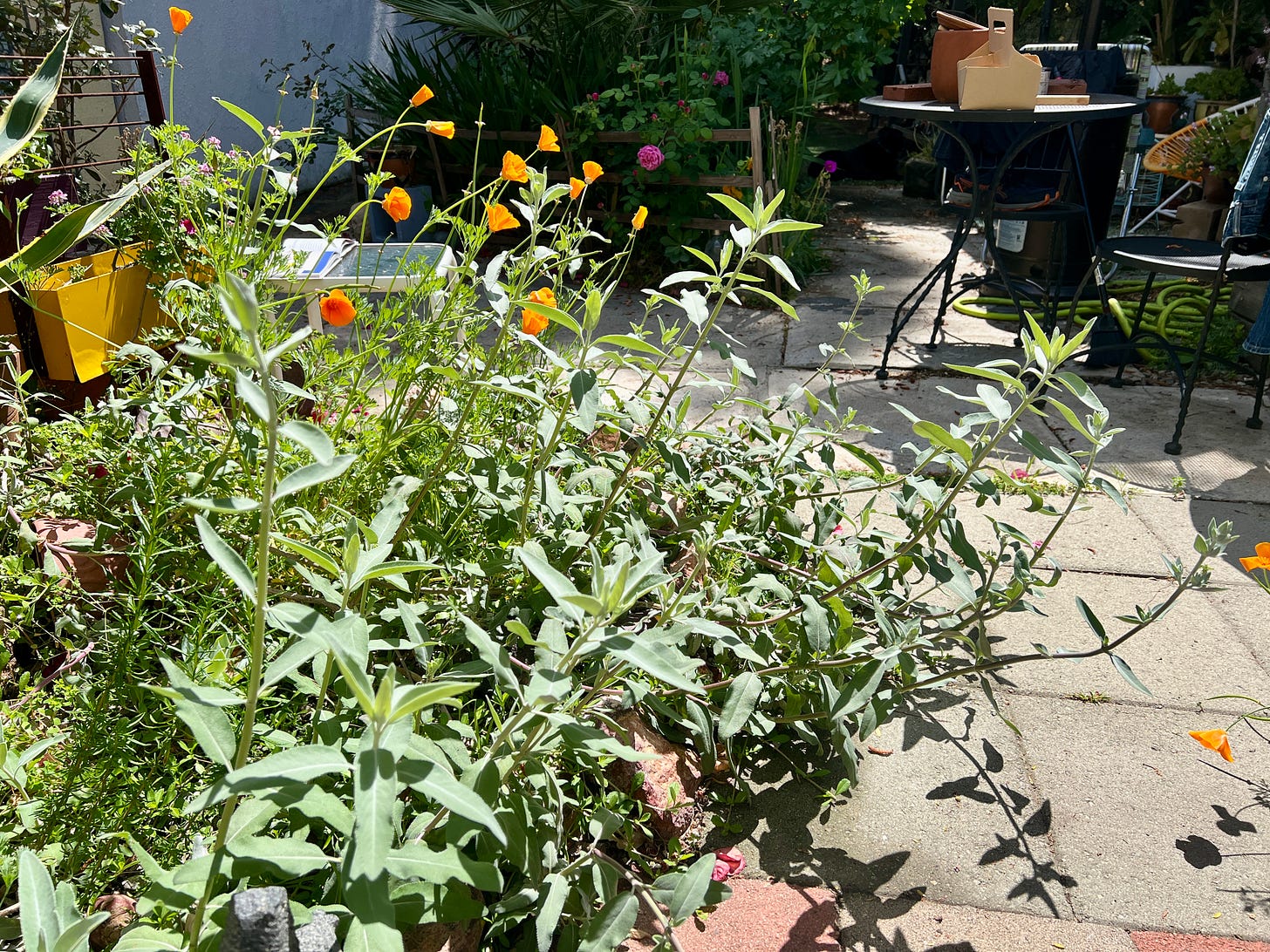
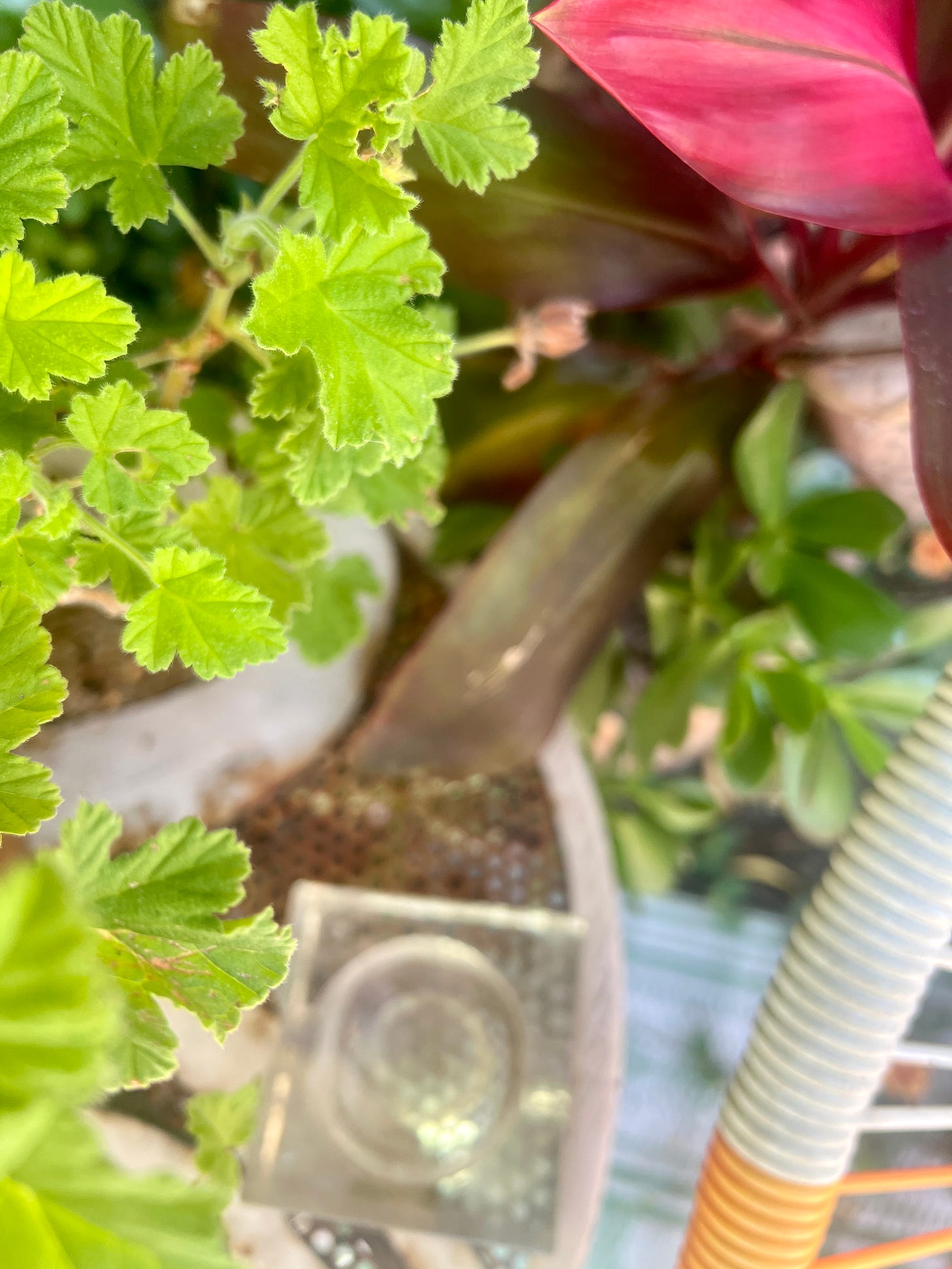

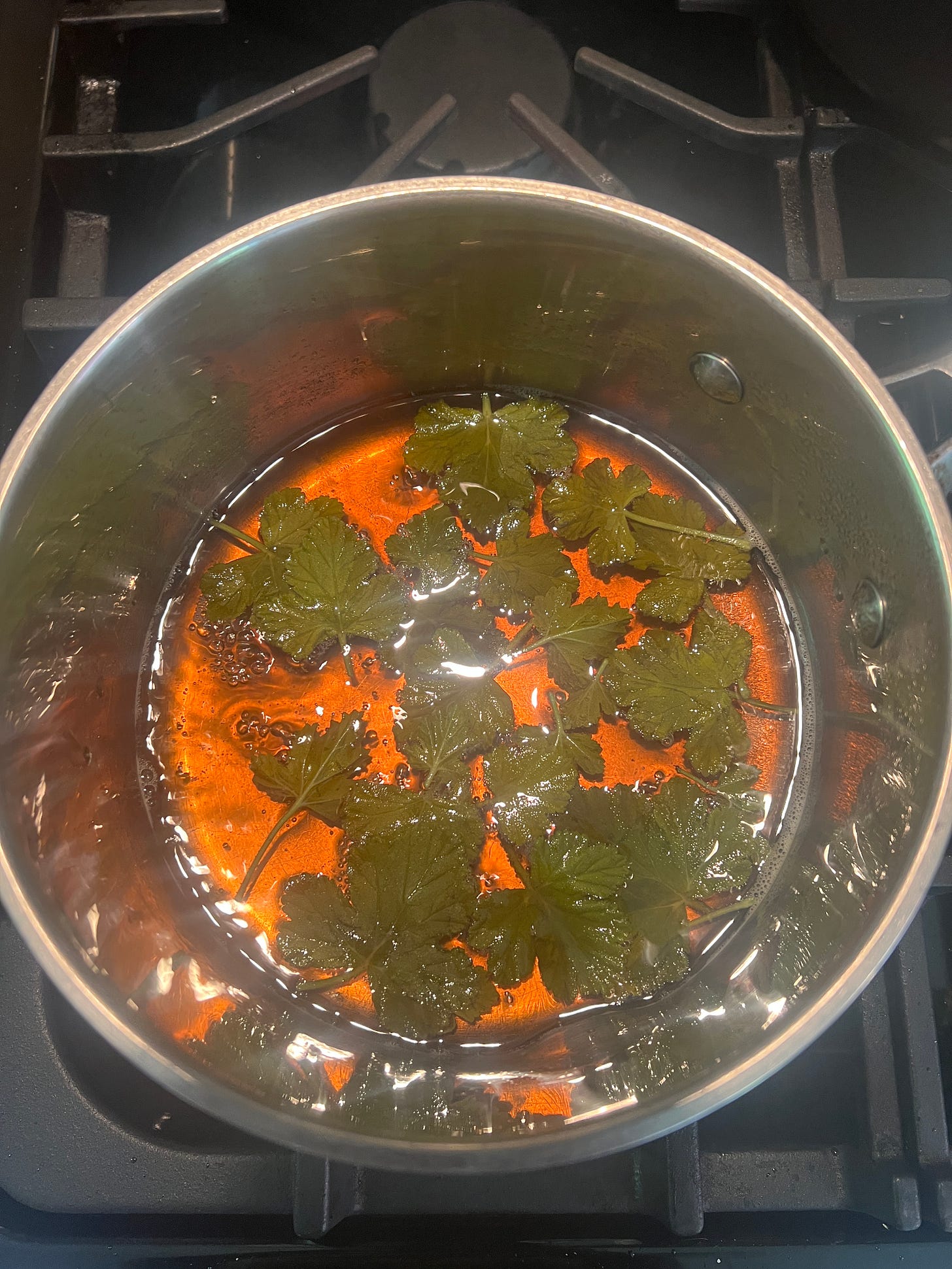
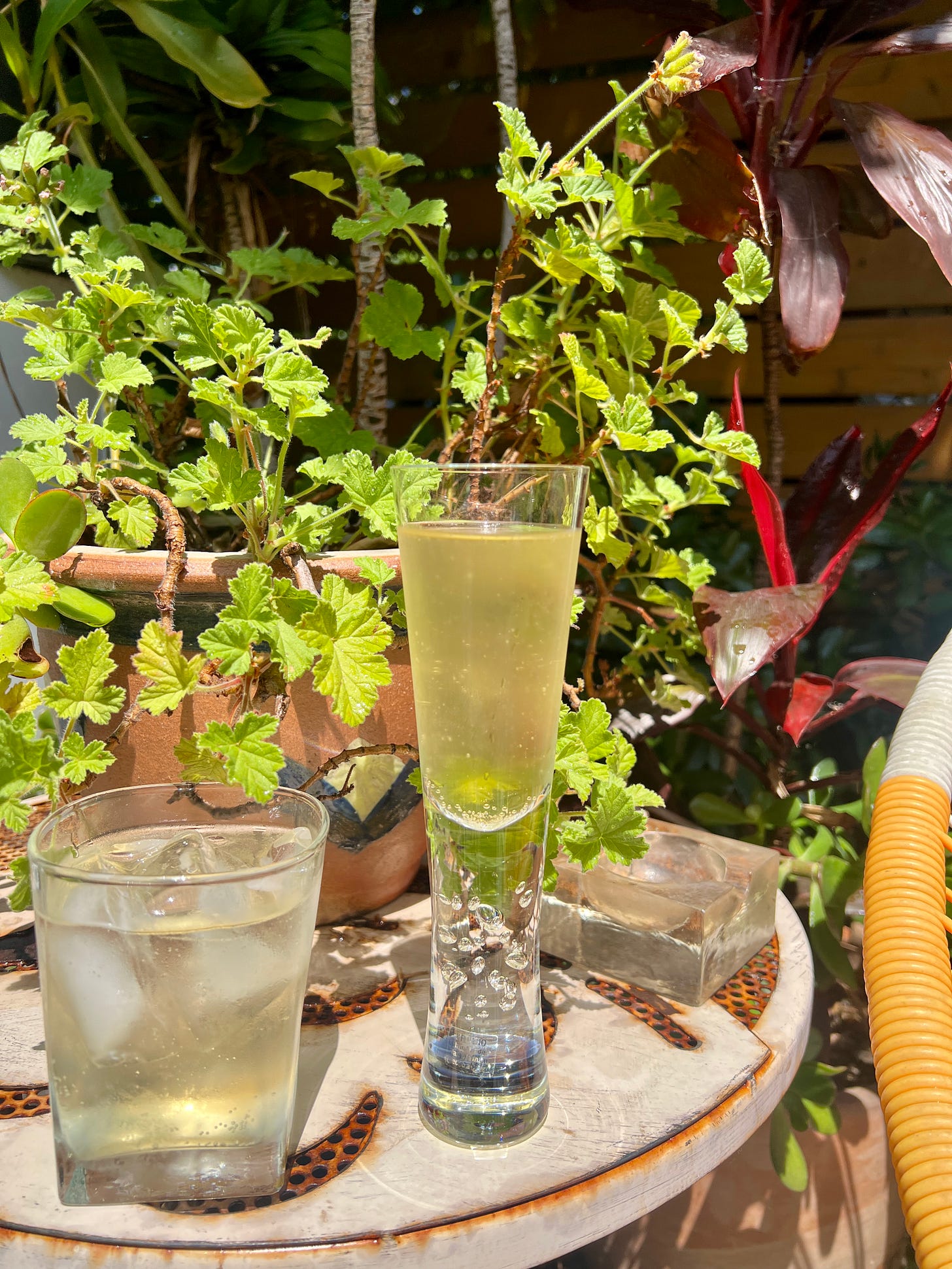
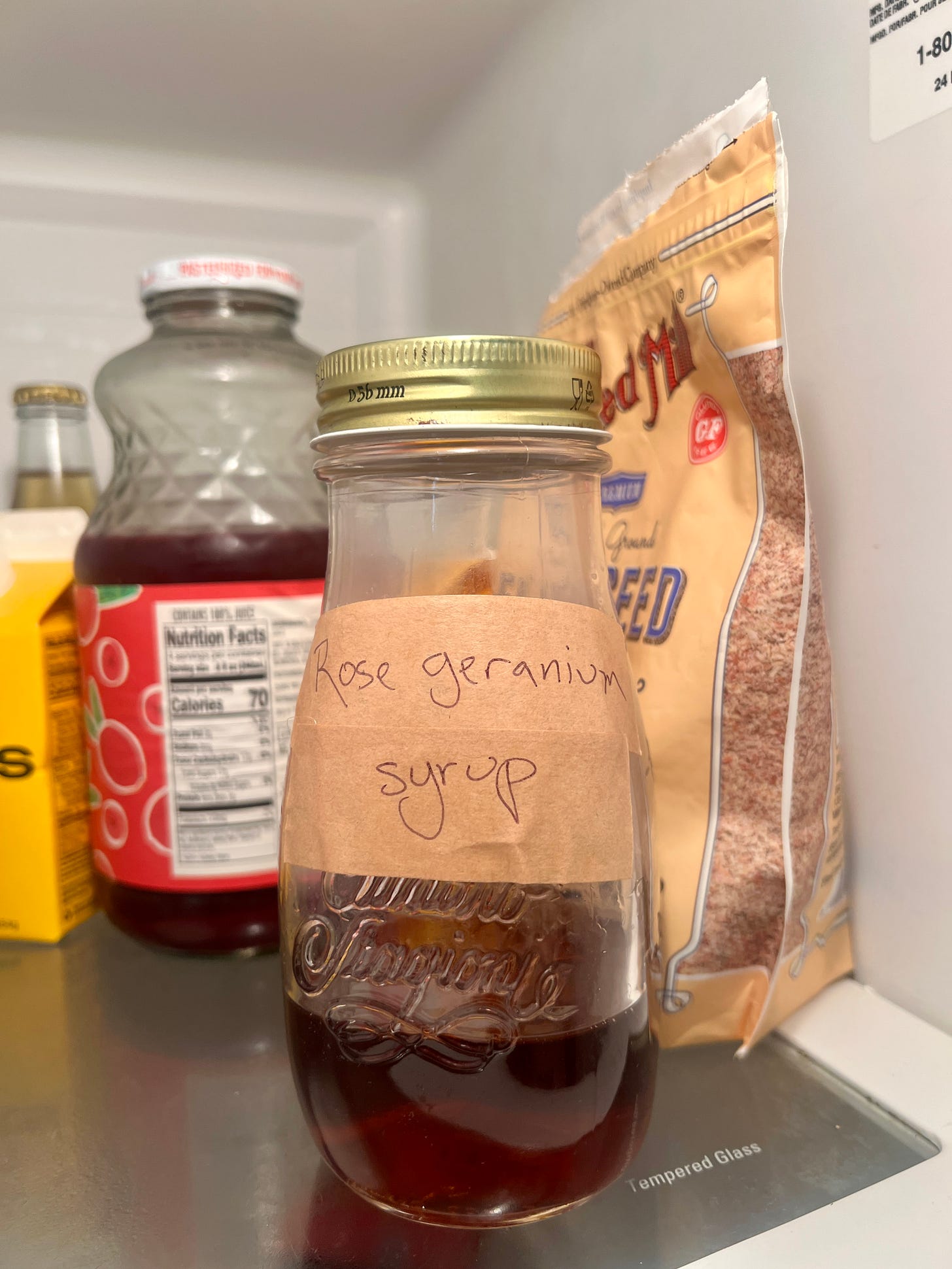

i also just learned about using scented pelargoniums for flavoring—wild. your syrup sounds great!